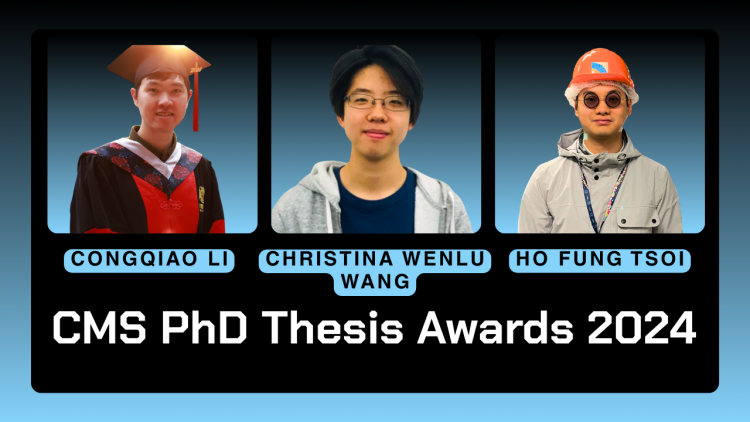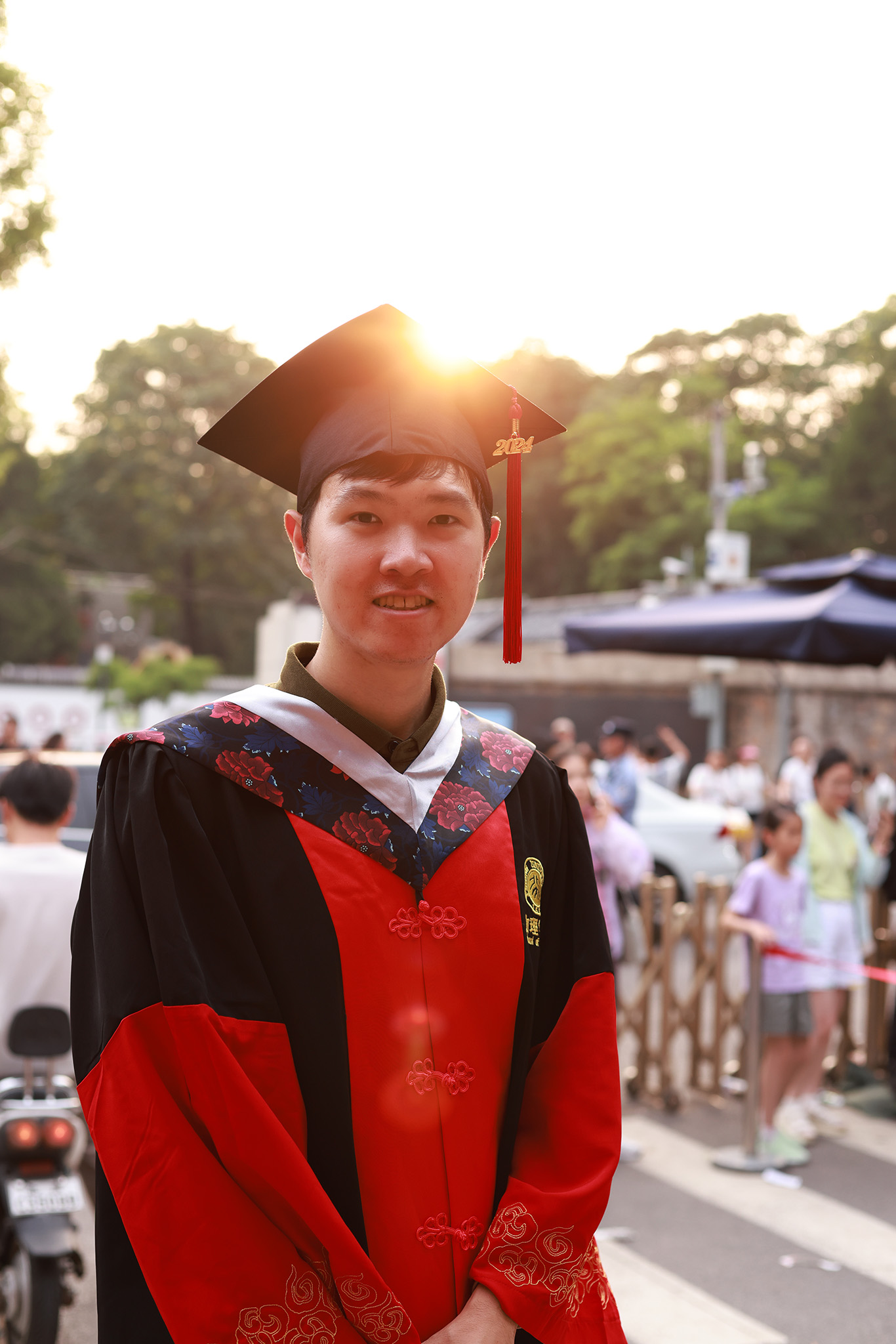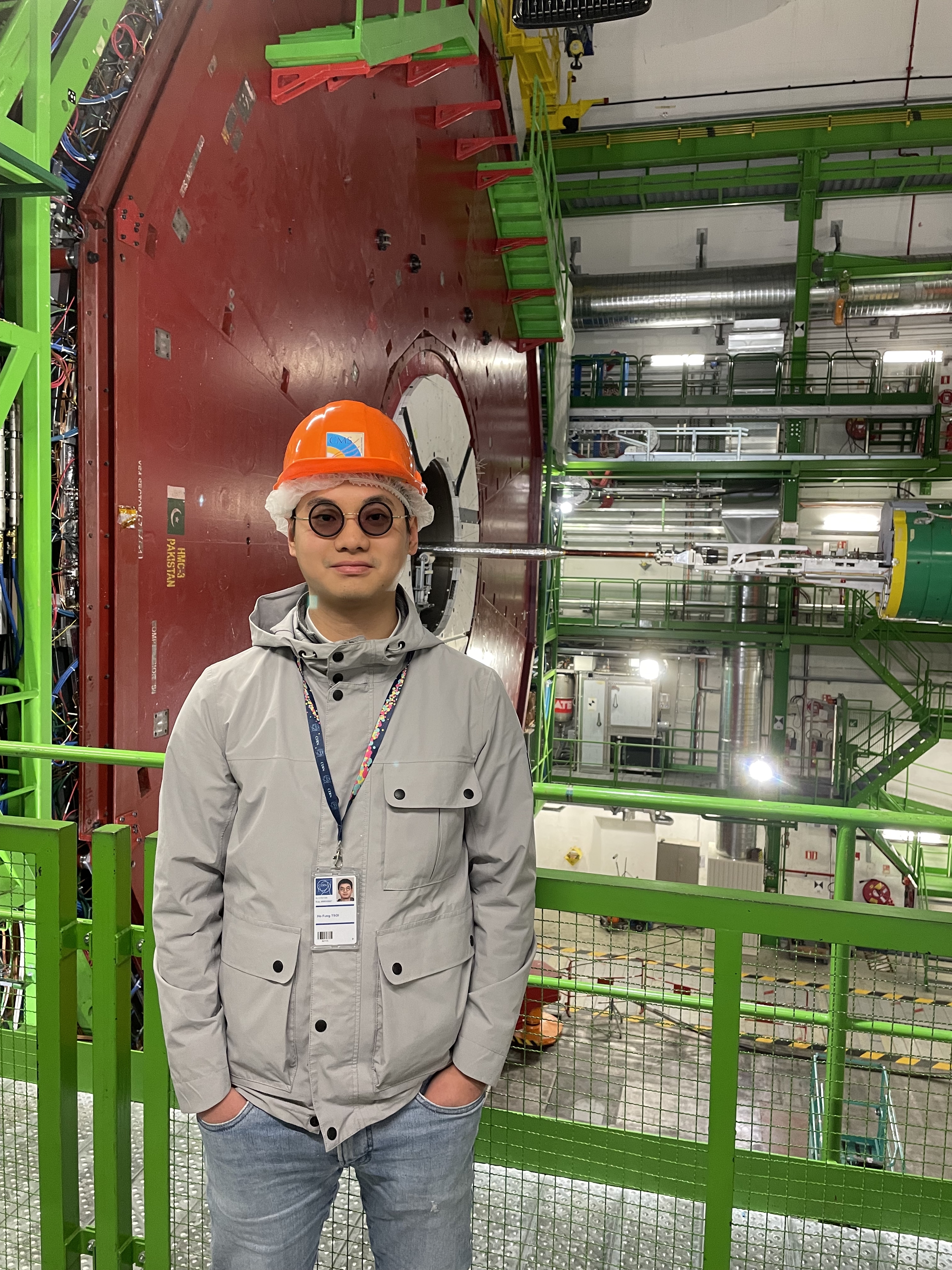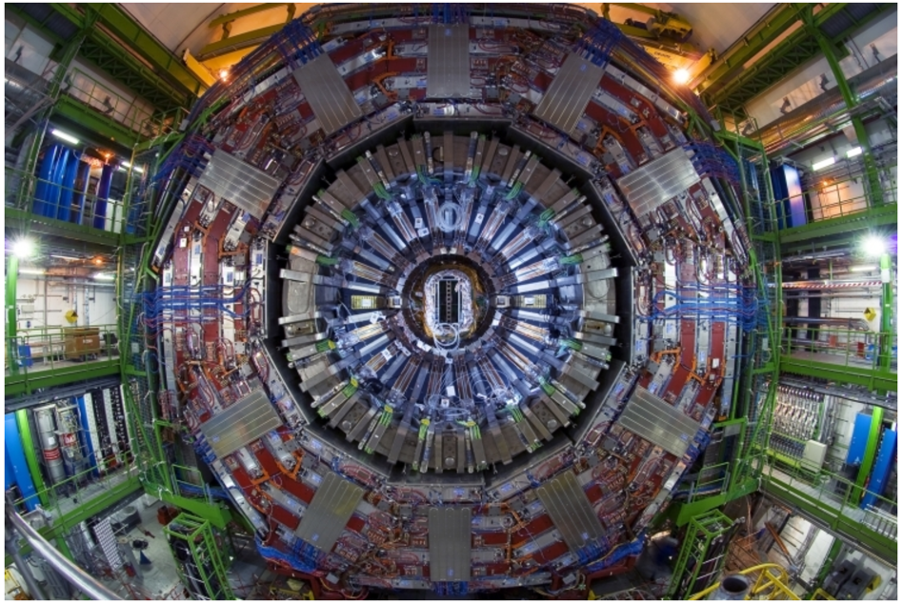
It's with great pride that the CMS Collaboration announces the winners of the 2024 CMS PhD Thesis Award. After a rigorous evaluation of a remarkable pool of 19 nominees, we are delighted to honour Congqiao Li, Christina Wenlu Wang, and Ho Fung Tsoi for their exceptional work.
This award celebrates the brightest young minds within the collaboration in high-energy physics, recognising doctoral theses that demonstrate unparalleled creativity, scientific excellence, and a significant impact on the CMS experiment and the broader field.
Graduate students are the bloodstream of our collaboration. They push the envelope of what is achievable at the LHC in ever-changing and inventive ways. Writing a Ph.D. thesis on CMS is no small feat. Not only is a typical thesis based on one or more CMS publications, but also the detailed documentation of the analysis/detector details is important for future generations of students, both within CMS and in other experiments. Today, we are celebrating the "crème de la crème" of last year's crop of CMS Ph.D. theses, competitively selected based on their ingenuity and the impact on the CMS experiment. The annual CMS Thesis Award recognizes exceptional efforts made by the award winners and highlights their research. - Greg Landsberg, chair of the CMS PhD Thesis Award Committee.
We now hear from the three laureates as they provide a closer look into their award-winning research.
 Congqiao Li, Peking University
Congqiao Li, Peking University
My dissertation, “Modern deep learning for large-R jet tagging—algorithms, calibration methods, and applications in the CMS experiment”, reflects its time: it was conducted during the wave of deploying advanced deep learning techniques in high-energy physics analyses. The large-radius (large-R) jets I studied are physics objects at the LHC composed of hundreds of particles. They are among the most challenging objects to analyse, yet we now have intelligent algorithms capable of interpreting them — for instance, distinguishing whether a jet originates from the decay of a Higgs boson. My dissertation explores many aspects of applying state-of-the-art deep learning methods to large-R jet analyses, including how to optimize algorithms for maximal performance (Part I) and how to calibrate the behaviour of such “black-box” discriminants to ensure robust agreement between real and simulated data (Part II). I demonstrated these methods in a Higgs boson study—measuring the Higgs-charm coupling through its decay into a charm quark-antiquark pair (H→cc̅) in the regime where the Higgs boson is highly energetic (Part III); this work facilitated us in achieving the most stringent direct constraint on the Higgs-charm coupling at the time.
The most exciting part, however, lies in the last part, where I discuss how the jet analysis model may evolve into its next generation. We developed a “global particle transformer” model, which we named GloParT. This model pushes a variety of large-R jet analyses to new limits, while being sufficiently “broadly knowledgeable”—much like the “P” and “T” in GPT — serving as a “pretrained transformer” that can generalize to a wide range of new tasks. The GloParT model marked our first step toward building a practical “foundation model” for analyzing LHC data. My future research aims to advance this direction further: developing more powerful pretrained analysis models that not only benefit the hundreds of analyses within our general-purpose experiment but also enable new paradigms of applications. An intriguing fact is that the frontier of deep learning for LHC data exploration remains far from saturated; thus, another key research objective of mine is to push the boundaries of AI for LHC data, designing methods that can fully harness its potential — for instance, achieving with one year of LHC data the effective utility of ten years of data collection.
 Christina Wenlu Wang, California Institute of Technology (Caltech)
Christina Wenlu Wang, California Institute of Technology (Caltech)
My thesis “Search for New Physics with the Compact Muon Solenoid Experiment and QIS-enabled Technology” focuses on searching for and understanding the physics beyond the Standard Model with two novel and complementary approaches. The first approach uses a novel reconstruction technique to search for new particles that are produced in CMS, while the second approach is enabled by new advances in quantum sensing technology to search for axions and hidden-sector Dark Matter.
The first part of my thesis searches for long-lived particles by using a novel technique to reconstruct showering decays of long-lived particles (LLPs) that decay in the CMS muon detector. Many theories beyond the Standard Model predict the existence of “long-lived particles” (LLPs). These particles are hard to detect with traditional techniques due to their displaced signatures, so I developed a novel method to reconstruct their decays using the CMS muon detector. Due to the unique design of the CMS muon detectors, composed of detector planes interleaved with the steel layers of the magnet flux-return yoke, decays of LLPs in the muon detectors induce hadronic and electromagnetic showers, resulting in a large cluster of localized hits that can be efficiently identified with a novel reconstruction technique. In my thesis, I applied this new technique to the full Run 2 dataset collected by CMS during 2016–2018, and explored a wide range of possible LLP lifetimes and masses that had previously been difficult to reach. Additionally, I helped design a new dedicated hardware-level trigger for this signature that significantly increases the chances of capturing these rare events. This new trigger was implemented successfully since 2022.
The second part of my thesis uses state-of-the-art superconducting nanowire single-photon detectors (SNSPDs). These detectors are incredibly sensitive, they can detect low energy single photons with extremely low noise, opening up new possibilities for direct dark matter detection. In my thesis, I developed and characterized SNSPDs for two different experiments. The first, named BREAD (Broadband Reflector Experiment for Axion Detection), uses a parabolic mirror to focus potential axion-converted photons onto the SNSPDs, targeting axion masses between 0.04 and 1 eV. The second experiment couples SNSPDs with gallium arsenide, a cryogenic scintillator that emits light when struck by particles. This setup allows us to directly search for hidden-sector dark matter interacting with electrons and may eventually enable discovery down to dark matter masses as low as 1 MeV.
In the coming years, I plan to continue working on both directions, utilising data from the CMS experiment and improving the sensitivity of quantum sensors to further improve our sensitivity in the search for new physics.
 Ho Fung Tsoi, University of Wisconsin-Madison
Ho Fung Tsoi, University of Wisconsin-Madison
My thesis "Search for exotic Higgs boson decays with CMS and fast machine learning solutions for the LHC" consists of two parts. The first part asks whether there exist additional Higgs-sector particles in nature beyond the Standard Model (SM) of particle physics. The SM provides the minimal framework that explains the masses of the W and Z bosons through the Higgs mechanism and generates mass for matter particles such as quarks and leptons via Yukawa interactions after electroweak symmetry breaking. However, many observations suggest that the SM is not a complete description of the universe, and theories that extend the Higgs sector predict more than one Higgs boson. My thesis focused on searching for the possibility that the SM Higgs boson decays exotically into a pair of new Higgs-like particles in final states with two b quarks and either two tau leptons or two muons. By analyzing proton-proton collision data collected by the CMS detector during Run 2 of the Large Hadron Collider (LHC), I set stringent exclusion limits on how often such decays could occur.
The second part focused on developing fast AI algorithms for low-latency applications in the trigger system. The Level-1 trigger at CMS performs the first round of event selection closest to the raw collisions, reducing an input rate of 40 million events per second to 100 thousand per second. This extremely high data rate requires a decision latency below a few microseconds (one microsecond = 0.000001 second). There, I conducted the early development of a novel trigger algorithm called CICADA (Calorimeter Image Convolution Anomaly Detection Algorithm), which is based on anomaly detection: a neural network learns the patterns of ordinary data and then flags unusual events that could contain new physics. I also contributed to the commissioning of the Level-1 calorimeter trigger for Run 3, where CICADA began taking data in late 2024.
In parallel, I collaborated with the Fast Machine Learning community on developing low-latency AI algorithms on FPGAs (a type of reconfigurable chip for high-speed processing). I developed algorithms using symbolic regression to compress neural-network models for sub-microsecond, and even nanosecond-scale, inference for potential applications in tightly latency-constrained environments such as trigger systems at the LHC.
Looking forward, I am currently doing postdoctoral research at Penn with the ATLAS experiment and will continue developing AI algorithms in both conventional and low-latency domains for use in ATLAS and in high-energy physics more broadly, to aid new physics searches at the energy frontier.

